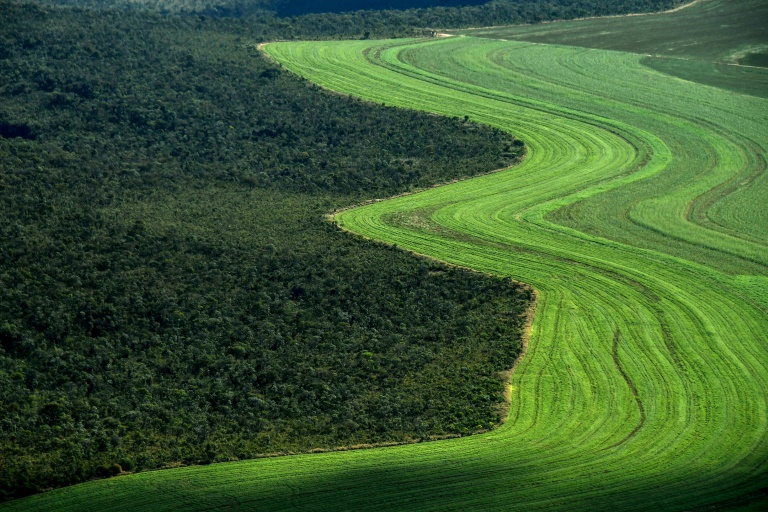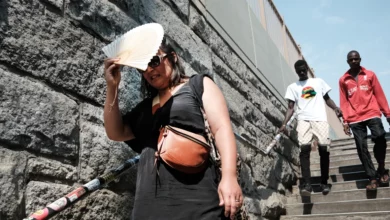As autumn arrives, the seasonal “black cloud” is expected to rise again in the Cairo sky. This atmospheric pollution first appeared in 1999 and 40 percent of it is formed from the burning of rice remains, while emissions from motor vehicles and factories account for the rest.
The high silica content and inner structure of rice straw and husks often prevents their burning from being completed; complete combustion needs three items: fuel (the wastes), an oxidizer (the air) and energy (the heat). If one of these is missing, the combustion releases a larger amount of residue (ashes, toxic gas, carcinogenic compounds, etc.). The husks' shell shape prevents air from running through rice heaps, causing nitrogen oxide and carbon monoxide to be emitted, as well as releasing heavy ashes.
Cultivators burn the straw and husks because they believe they have no value and there are no communal grinders and compressors. The unlawful burnings are a pressing health concern for millions of Egyptian citizens.
Rice waste could nonetheless unite industrialists and environmentalists, though, as they find common cause in earning money and protecting the environment.
Ahmed al-Dorghamy, an environmentalist, explains that the black cloud could be less harmful this year because farmers will burn the rice during the day due to lax control following the 25 January revolution. “The imposed ban over rice straw burning had previously driven many farmers to burn in the darkness of the night when inspectors couldn't see them,” Dorghamy explains. “This was actually the worst time to burn, when meteorological conditions were least appropriate.”
As a result, the negative impact of this year’s black cloud may be lessened compared to past years. But optimism should not stop there, as the rice harvest does not stop at the harvest. Composed of four main components, the grain can be easily used in other ways. Rich in fiber, cellulose, protein and a number of vitamins and minerals, the entire rice grain is gold mine.
Innovative technology firms from Canada, the US, France and China have managed to turn the leftovers from rice milling into products ranging from medical treatments for diabetes to cosmetics to plywood.
Many research programs have been launched between Egypt and the European Union in order to transfer, adapt and develop these added technologies to the Egyptian rice industry. One of these projects was led by Amr Mohamed, a PhD in pharmacology and medicinal plants and winner of a gold medal from the UK's Green Apple Awards in 2005.
Four partner institutions were involved under the European-Egyptian Innovation Fund's support in Germany, France and Egypt. Since 2010, this fund has offered grants for innovative projects that become practically implemented in different fields, such as agronomy, wind power, computer science or education.
Egypt has very fertile soil and its rice production is continuously rising, as will its byproducts and the various opportunities they offer.
Rice's brown outer layer, the bran, contains a high concentration of oil and 65 percent of the total nutrient capacity of the grain. It contains also several acids and vitamins, as well as protein and fiber.
This part is usually used to feed cattle, because it turns rancid within a few hours of milling. But out of 1.6 million tons of rice husks and bran produced in Egypt yearly, only 300,000 go to the animals. This problem has been partially resolved by stabilizing – heating by conduction or from an infrared source – the brown outer layer before transforming it into either a pharmaceutical, nutraceutical – a dietary complement designed to lower blood pressure or improve diabetic treatment – or cosmetic good.
The German Institute for Polymers and the Goethe University in Frankfurt help in evaluating scientific data of the contents of two Egyptian rice varieties, says Mohamed. The labs of the university also control the use of the finished products in antibiotics production and the treatment of diabetes, giving it European and international standards.
The two other parts of rice waste consist of straw and husks, that latter having been used since the fifth century BC to produce mulch and cement. Their high amounts of cellulose produce levels of ash that are ten times higher than those from wood production, which partly explains the dark cloud's harmfulness.
The problem lies in the residues rice straw and husks leave behind. Indeed, composting these materials requires them to degrade for more than four months, and their low bulk density – meaning that a small mass takes up a disproportionate amount of space – makes storage and transport inconvenient. If a farmer receives nothing more than a legal injunction not to burn straw and husks, then stockpiling will be of little interest to him or her.
The partnership between the French University of Nancy and the Egyptian National Research Center has transmitted the know-how for converting rice husks into activated carbon (AC) through the process of pyrolysis, which involves exposing fibers to a high temperature in a vacuum, causing them to scald without any flames and making the molecules divide into smaller ones and reorganize themselves in the ventilated structure.
This chemical fragmentation produces AC, a material heavier than ashes but lighter than charcoal. Hollow like pumice or coral, one tiny gram of this dark matter can contain a total surface area of 800-1000 square meters.
This material, which acts as a combustible in its common form, is designed to purify water, oil and gas for use in, among other things, sugar cane refineries or the paint industry. AC has the capacity to retain various pollutants, and would represent a long awaited opportunity for Egyptian workers to live longer in a healthier environment.
The last research partnership brought together the Institute of Polymer Technologies, National Research Center, and Kaha for Environmental & Agricultural Projects to work on the latest link in the rice industry chain: natural fiber plastic composites.
The husks and straw are first reduced into powders and granules. Next, they are mixed with plastic polymers, resulting in a material that costs 50 percent less than conventional polymer. Natural fiber plastic composites are well-known in Europe but have no equivalent industry in the Middle East. Eco-friendly and useful for a variety of needs, their application ranges from plywood for simple furniture to marine decking. The consortium of international research centers and Egyptian companies has completed the pilot project to prove the technology reliance. Now they are planning to grow on an industrial scale by autumn 2012.
On his way back from a trading exhibition on packing materials and machinery and a conference on natural product research in Turkey, Mohamed explains that this new technology is of great interest to Turkey and other Middle Eastern countries. He adds, “They asked if they could cooperate with us, and we welcome this cooperation proposal.”




